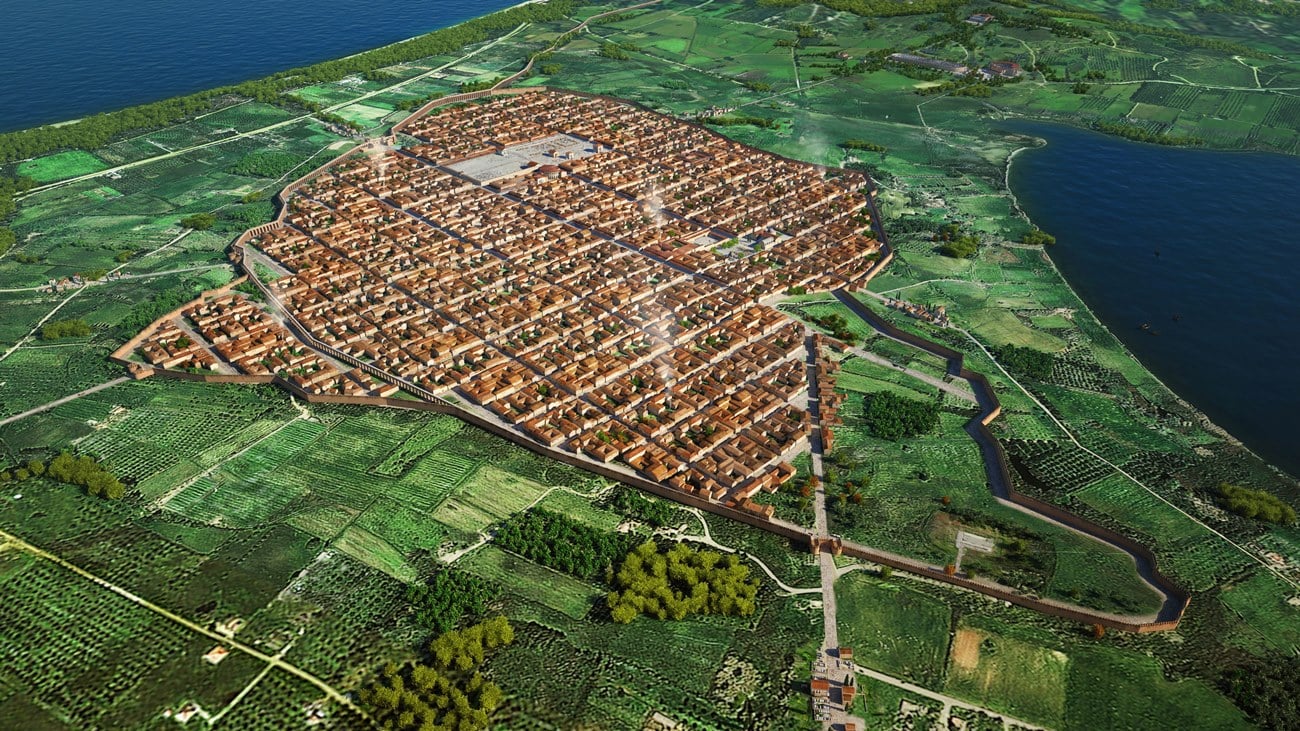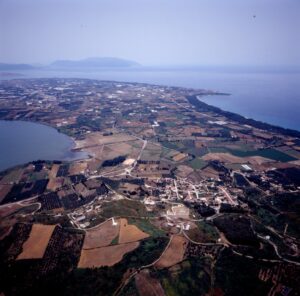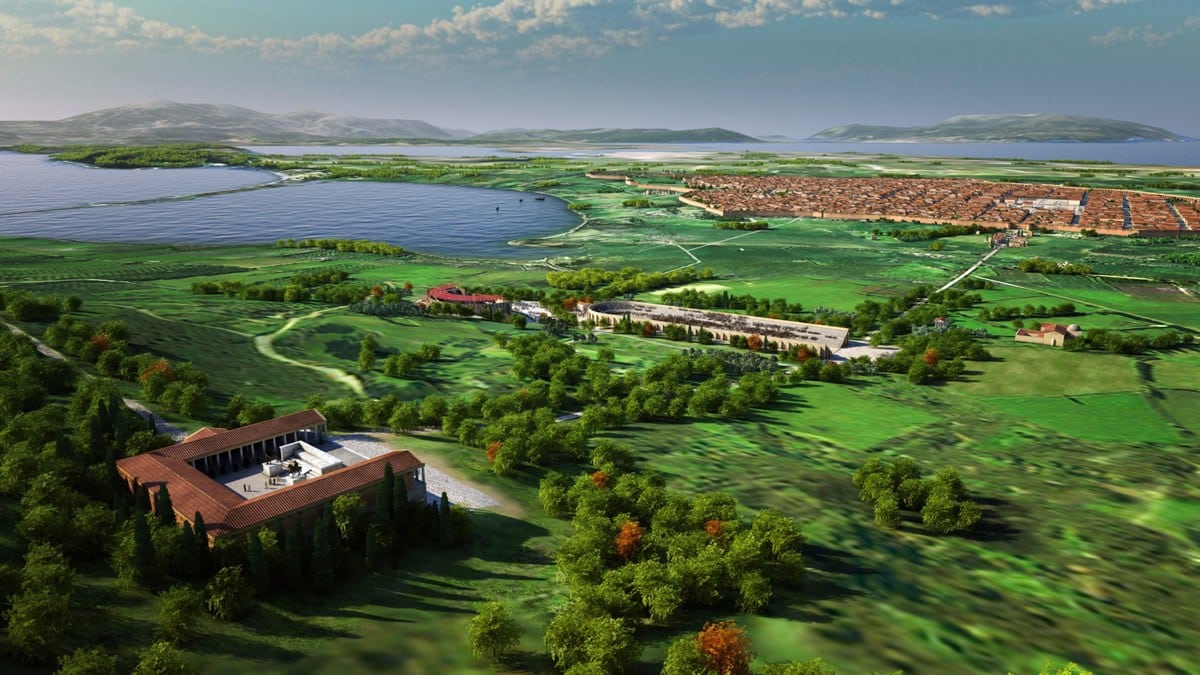Nicopolis was built on the neck of the peninsula between the Ambracian Gulf and the Ionian Sea. It was founded as a symbol of the great victory gained by Gaius Julius Caesar Octavius –later Roman emperor Augustus‒ against Marcus Antonius and Queen Cleopatra VII of Egypt, in the naval battle of Actium (31 B.C.).
Following his great victory, that ended the Roman civil war, Augustus decided to found Nicopolis, not only as a reminder of his victory but also as a control center of Western Greece along the city of Patras. The new city was formed by the relocation –in some cases by force‒ of residents of other cities (Cassope, Ambracia, Leucas etc.)
The emperor dedicated Nicopolis to god Apollo Actius or Actiacus. The Actian games –old local games of the Acarnanias‒ were re-founded and devoted to the god. Apollo was worshiped here with the epithets Leycadios (from Leycas), and Agyieus. In his sanctuary, cults of other gods were also established, i.e. of Poseidon and Ares, as an inscription found on the spot informs us. Among the cults of the city were those of Zeus, Dionysus, Hermes, Hephaestus, Asclepius, Hecate, Pan, Hercules and Attis. Dominant was the cult of Artemis, worshipped with the epithets Lafria, Soteira, Efesia. Two eastern cults are also known: the cults of Isis and of Cybele. The worship of the Roman emperor Octavian, founder of the city, was naturally prominent.
The city is mentioned in Roman written sources as ”Nicopolis romana colonia”, ”civitas libera Nicopolitana” (Pliny, Nat. Hist. 4,5; Tacitus, ann. 5,10) or ”colonia Augusta”.







